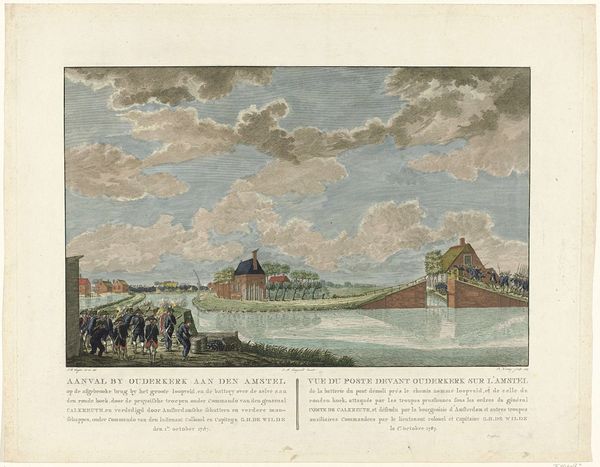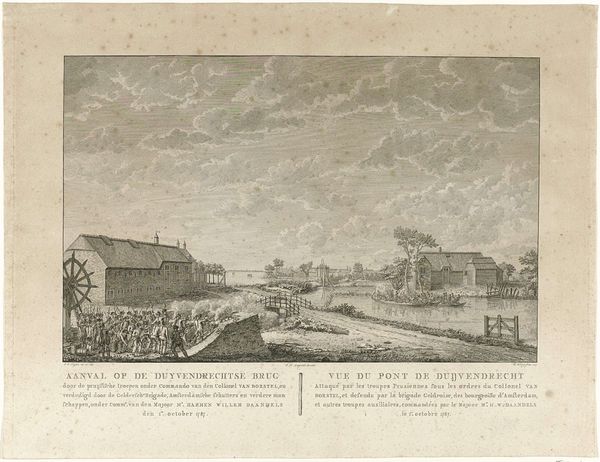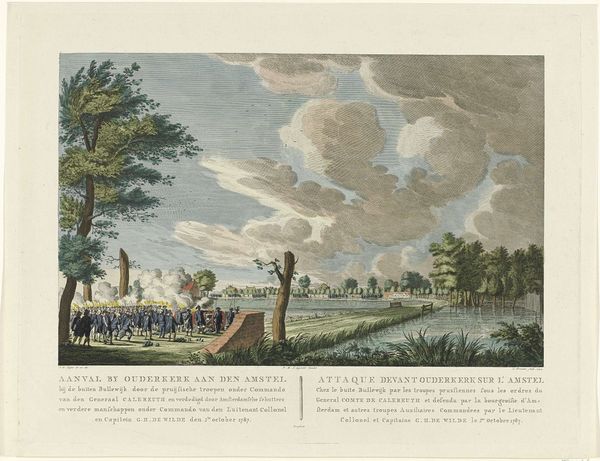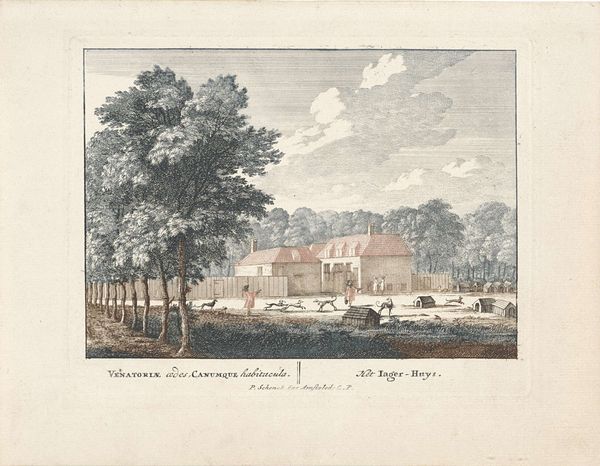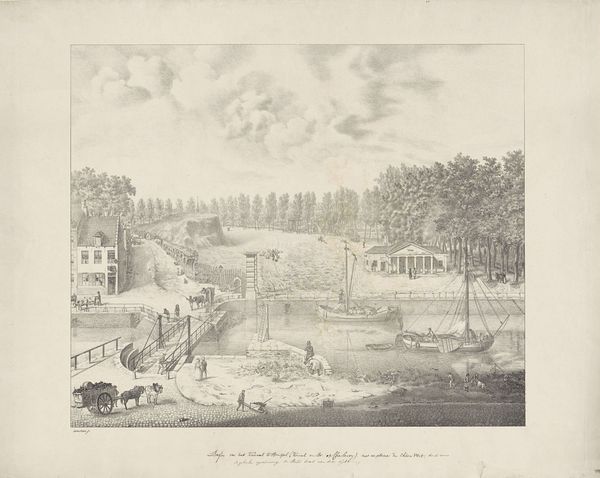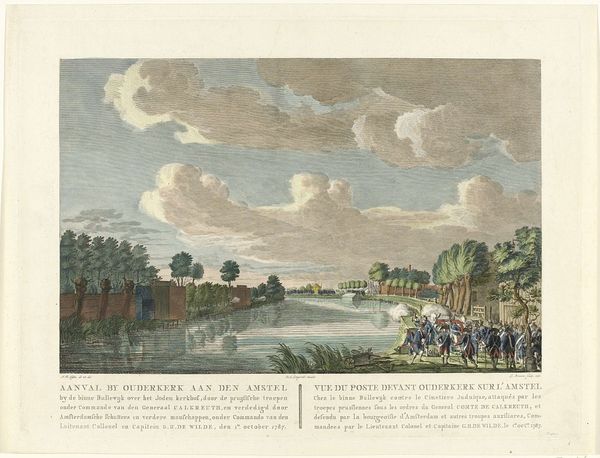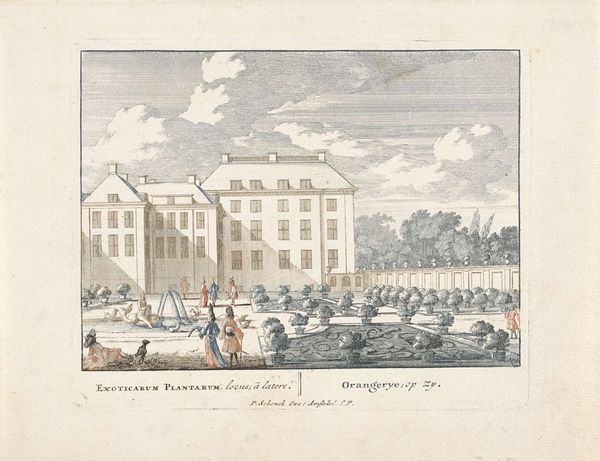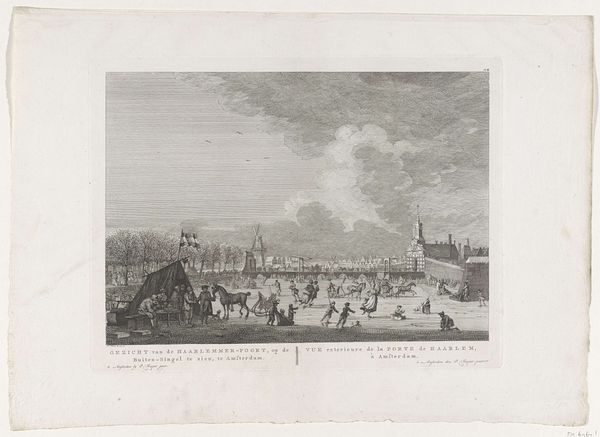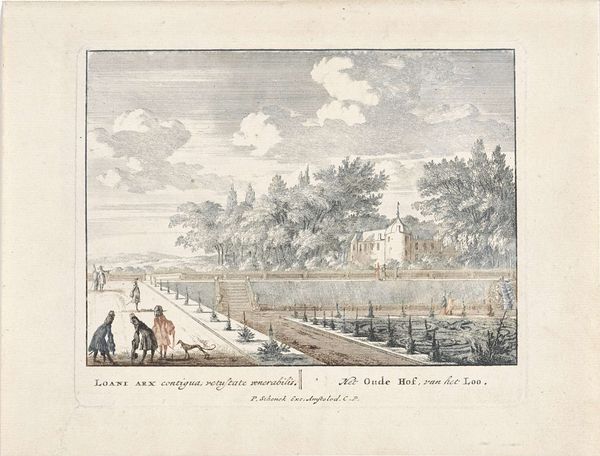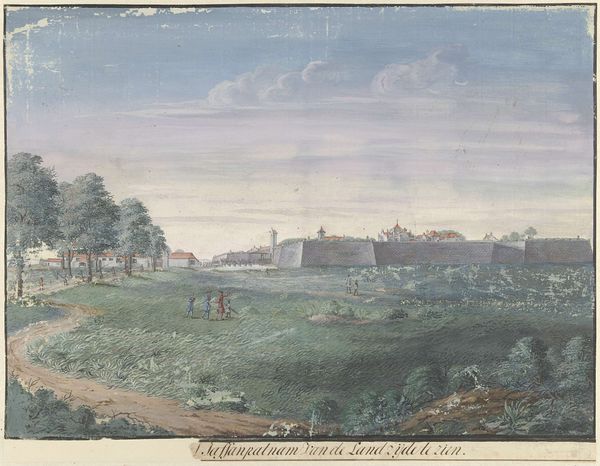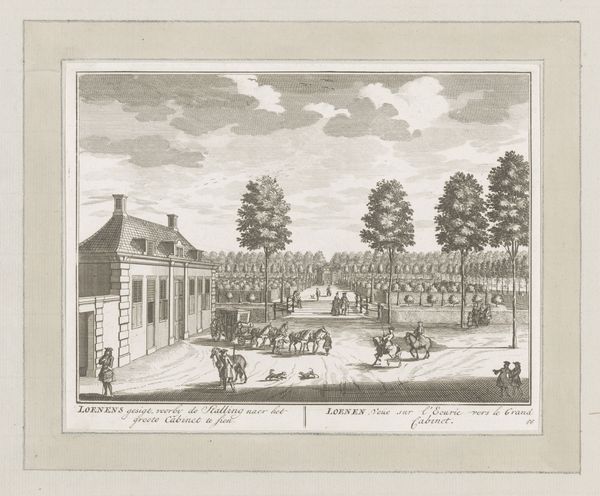
aquatint, print, etching
#
aquatint
# print
#
etching
#
landscape
#
romanticism
#
cityscape
#
history-painting
Dimensions: height 433 mm, width 565 mm
Copyright: Rijks Museum: Open Domain
This print of the Attack on the Duivendrecht Bridge was made in 1787 by Theodoor Koning, using etching and hand-coloring. A print like this was relatively inexpensive, and could be widely circulated. The process begins with a metal plate, likely copper, into which the design is bitten with acid. Then, the plate is inked and printed, leaving an impression on the paper. Finally, watercolor is carefully applied by hand, giving a vivid impression of the scene. Look closely, and you’ll see how this production method speaks to the social context. Prints like these were visual reportage, allowing people to follow current events. The labor is divided, with the artist creating the design, and then other hands adding color. This division of labor made it possible to produce images efficiently, like newsprint of today. These prints democratized image-making and consumption. The materials and method allowed for widespread distribution, contributing to a visual culture that was no longer solely the domain of the elite.
Comments
No comments
Be the first to comment and join the conversation on the ultimate creative platform.
